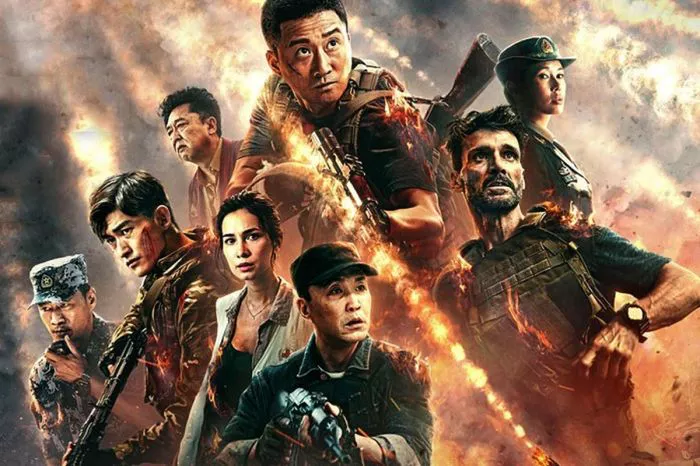“Wolf Warrior II,” directed by and starring Wu Jing, represents a pivotal moment in contemporary Chinese cinema, celebrated for its action-packed narrative and patriotic themes. Beyond its box office success and cultural impact, the film also offers insights into gender representation and the evolving role of women in Chinese action cinema. Let’s explore how “Wolf Warrior II” intersects with the rise of China and its portrayal of gender dynamics within the genre.
Cultural Context and National Identity
“Wolf Warrior II” unfolds against the backdrop of China’s rising global influence, reflecting aspirations for international recognition and leadership. The film’s protagonist, Leng Feng, embodies virtues of heroism and national pride, resonating with audiences eager to see Chinese narratives portrayed on the world stage. The success of “Wolf Warrior II” underscores the cultural significance of storytelling in shaping perceptions of China’s evolving identity and geopolitical ambitions.
Gender Representation in Action Cinema
Action cinema has traditionally been male-dominated, with male protagonists often occupying central roles in narratives driven by physical prowess and combat skills. However, “Wolf Warrior II” challenges these conventions by incorporating strong female characters who play pivotal roles in the story. Notably, Celina Jade portrays Rachel Prescott, a doctor and humanitarian who joins Leng Feng’s mission in the war-torn African country.
The inclusion of Rachel as a capable and resourceful character subverts gender stereotypes, highlighting women’s agency and competence in high-stakes situations. Rachel’s character contributes to the film’s thematic depth, emphasizing the importance of collaboration and solidarity across gender lines in the face of adversity.
Empowerment and Resilience
The portrayal of women in “Wolf Warrior II” reflects broader societal shifts in China towards gender equality and empowerment. The film celebrates resilience and determination, qualities embodied by characters like Rachel who defy traditional gender roles and contribute meaningfully to the narrative. Rachel’s courage and compassion serve as a counterpoint to the film’s intense action sequences, enriching the thematic resonance of the story.
Cultural Impact and Audience Reception
The inclusion of strong female characters in “Wolf Warrior II” resonated positively with audiences, both domestically in China and internationally. Rachel’s character, in particular, received praise for her agency and multifaceted portrayal, representing a departure from passive or stereotypical depictions of women in action cinema. By showcasing women as competent and integral to the narrative, “Wolf Warrior II” contributes to broader conversations about gender representation in Chinese filmmaking.
Wu Jing’s Directorial Vision
As the director of “Wolf Warrior II,” Wu Jing played a pivotal role in shaping the film’s thematic content and character development. His approach to gender representation emphasizes inclusivity and diversity, reflecting a commitment to nuanced storytelling and cultural authenticity. Wu Jing’s directorial vision underscores the potential of action cinema to evolve beyond traditional gender norms and embrace narratives that resonate with diverse audiences.
Future Directions in Chinese Cinema
The success of “Wolf Warrior II” underscores the evolving landscape of Chinese cinema, where filmmakers like Wu Jing are pushing boundaries and challenging conventions. As Chinese action cinema continues to gain prominence on the global stage, there is growing potential for diverse and inclusive narratives that reflect contemporary realities and celebrate gender diversity.
Conclusion
“Wolf Warrior II” represents a convergence of cultural identity, cinematic innovation, and gender representation within the context of China’s rise as a global power. Through its portrayal of strong female characters and its celebration of resilience and heroism, the film contributes to broader conversations about gender equality and empowerment in action cinema.
As Chinese filmmakers continue to explore new narratives and embrace diverse perspectives, the legacy of “Wolf Warrior II” serves as a testament to the transformative power of storytelling in shaping perceptions and fostering cultural exchange. By championing gender diversity and representation, films like “Wolf Warrior II” pave the way for a more inclusive and dynamic cinematic landscape, both in China and beyond.
Related Topics:
Why is Wolf Warrior 2 receiving low reviews from American critics?

